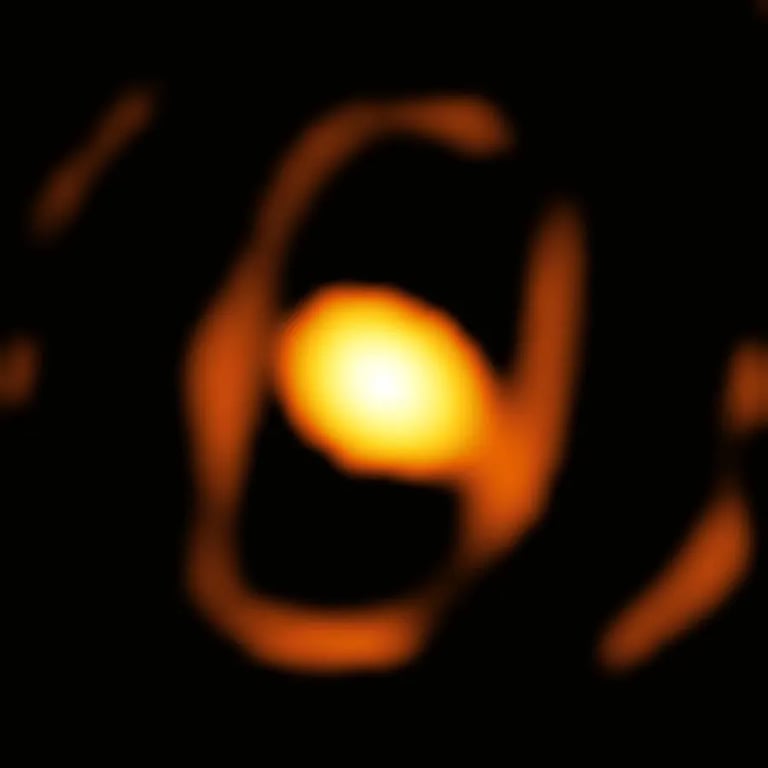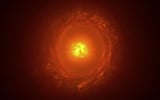Astronomers Capture Stunning Close-Up of Dying Star WOH G64 Before Supernova
November 21, 2024
Astronomers have successfully captured the first close-up image of WOH G64, a massive star located 160,000 light-years away in the Large Magellanic Cloud, just before it is expected to go supernova.
As WOH G64 continues to dim, capturing further detailed images will become increasingly difficult, highlighting the urgency for additional observations.
The observations revealed an elongated emission region around the star, indicating complex interactions in its environment, potentially due to a bipolar outflow.
The Large Magellanic Cloud, where WOH G64 is located, provides a unique environment for studying stellar evolution due to its lower dust content and metallic elements compared to the Milky Way.
Experts speculate that when WOH G64 eventually explodes, it could be visible to the naked eye, similar to the supernova observed in the same galaxy in 1987.
Future instruments like GRAVITY+ are expected to enhance observational capabilities, allowing for sustained studies of WOH G64 and its impending supernova.
This star, which has a lifespan of approximately 10 to 20 million years, has undergone significant changes in appearance over the last decade, becoming dimmer due to the expulsion of gas and dust.
Understanding the mass loss of WOH G64 is crucial for insights into the evolution of massive stars and their eventual supernovae, which play a vital role in the formation of heavy elements.
The image represents WOH G64 as it was 160,000 years ago, suggesting that it may no longer exist today, as it is likely to have already died.
The image reveals an unexpected egg-like shape of the cocoon surrounding WOH G64, possibly resulting from uneven material shedding or the gravitational influence of an unseen companion star.
Astronomer László Mólnar noted that ongoing changes in the star's brightness could be better understood with future data from the upcoming 10-year survey of the Rubin Observatory.
The findings were published in the journal 'Astronomy and Astrophysics,' emphasizing the necessity of continued monitoring to comprehend the star's evolution.
Summary based on 22 sources
Get a daily email with more Science stories
Sources

Forbes • Nov 21, 2024
In Photos: The First Close-Up Of A Star Outside Our Galaxy
The Guardian • Nov 21, 2024
First close-up image of a star outside Milky Way shows supergiant in ‘cocoon’
Yahoo News • Nov 21, 2024
Astronomers say they’ve captured the first close-up image of a star beyond our galaxy
Yahoo News • Nov 21, 2024
Scientists obtain image of a star on the precipice of disaster